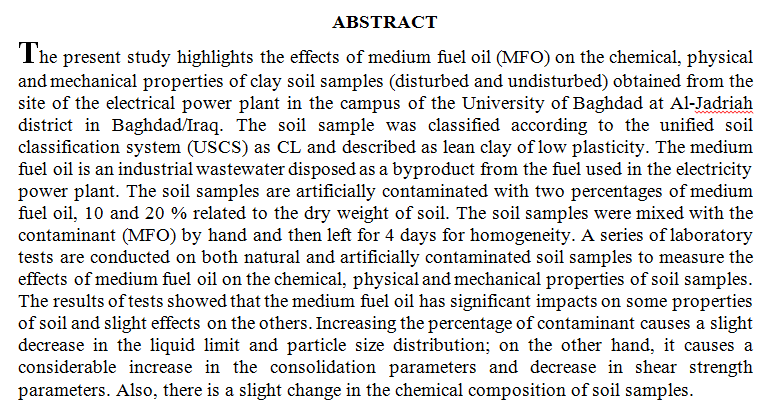
In this work, excess properties (eg excess molar volume (VE), excess viscosity (ȠE), excess Gibbs free energy of activation of viscos flow (ΔG* E) and molar refraction changes (ΔnD) of binary solvent mixtures of tetrahydrofurfuryl alcohol (THFA) with aromatic hydrocarbons (benzene, toluene and p-xylene) have been calculated. This was achieved by determining the physical properties including density ρ, viscosity Ƞ and refraction index nD of liquid mixtures at 298.15 K. Results of the excess parameters and deviation functions for the binary solvent mixtures at 298.15 K have been discussed by molecular interactions that occur in these mixtures. Generally, parameters showed negative values and have been found to fit well to Redlich-Kister
... Show MoreThis study was aime to investigate the effect of addition different concentration of celery leaves to white soft cheese ,Treated cheese between 2018-2019, ,The finely Celery (Apium graveolens) leaves were adding to crude white cheese after texturizing in three leveles included (A,B,C) in addition of control antimicrobial activity of celery treated cheese against total account bacteria and coliform bacteria was estimated during (0, 5, 10, 15, 20) days. The results were shown that the higher concentration of celery in treated cheese, had a lower concentration of protein, lipid and ash content ( 16.81,15.13 and 4.30% respectively, but it had a higher moisture content 59.50%.also the total bacteria counts were decreasing significantly (0.05 P)w
... Show More (10)
(10)
thin films of se:2.5% as were deposited on a glass substates by thermal coevaporation techniqi=ue under high vacuum at different thikness
 (3)
(3)
 (3)
(3)
 (12)
(12)
 (11)
(11)
 (54)
(54)
 (48)
(48)
Isolated Bacteria from the roots of barley were studied; two stages of processes Isolated and screening were applied in order to find the best bacteria to remove kerosene from soil. The active bacteria are isolated for kerosene degradation process. It has been found that Klebsiella pneumoniae sp. have the highest kerosene degradation which is 88.5%. The optimum conditions of kerosene degradation by Klebsiella pneumonia sp. are pH5, 48hr incubation period, 35°C temperature and 10000ppm the best kerosene concentration. The results 10000ppm showed that the maximum kerosene degradation can reach 99.58% after 48 h of incubation. Higher Kerosene degradation which was 99.83% was obtained at pH5. Kerosene degradation was found to be maximum at 3
... Show More (6)
(6)
Isolated Bacteria from the roots of barley were studied; two stages of processes Isolated and screening were applied in order to nd the best bacteria to remove kerosene from soil. The acve bacteria are isolated for kerosene degradaon process. It has been found that Klebsiella pneumoniae sp. have the highest kerosene degradaon which is 88.5%. The opmum condions of kerosene degradaon by Klebsiella pneumonia sp. are pH5, 48hr incubaon period, 35°C temperature and 10000ppm the best kerosene concentraon. The results 10000ppm showed that the maximum kerosene degradaon can reach 99.58% aer 48 h of incubaon. Higher Kerosene degradaon which was 99.83% was obtained at pH5. Kerosene degradaon was found
... Show More (6)
(6)
